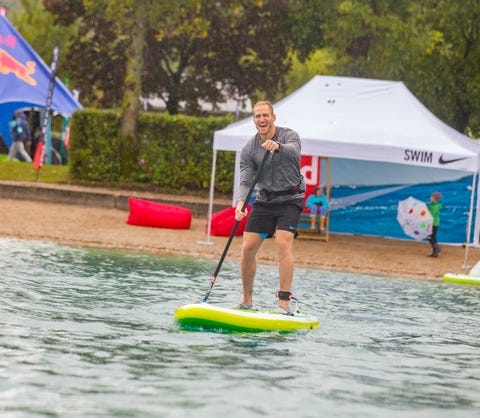
When your full-body workouts hit a rut, sometimes your best option might be to hit the water.
That would certainly be the recommendation of Red Paddle Co. founder John Hibbard, who is a major proponent of aquatic sports like stand-up paddle boarding (SUP) as a means to get outside—and to get fit. When approached as a workout, the low-impact, high-reward activity allows riders to get a full-body burn on the water without many of the hang-ups of land-based training, like complex movements that can take a toll on the joints and repetitive, mind-numbing routines. If you paddle at moderate speed, you can potentially burn up to 500 calories in an hour session, too, according to the Denver Post.

Hibbard isn’t alone in his support of SUP. A May 2018 study predicts that the global market for the boards will grow over the next decade as the popularity of water sports and design innovation make the activity more common.
One of the key breakthroughs driving the accessibility of SUP has been inflatable board design (iSUPs), with companies like Hala and Hibbard’s Red Paddle Co. leading the charge. Instead of stiff, unwieldy fiberglass rigs, these versatile boards are (relatively) easy to break down for transportation and storage, making them much more appealing for non-competitive riders.
How iSUPs Came to Be
The need for more convenient board design was obvious to Hibbard early on. He began windsurfing as a teenager in the U.K., eventually competing on the world professional circuit. After the competitive aspects of the sport began to take a toll on his body and burned him out mentally, he switched to paddle boarding.
“I was looking for something almost like rehab, to straighten out my body,” Hibbard told MensHealth.com in a phone interview. He claimed that SUP’s benefits were immediately apparent, as his back and ankle issues from the higher-impact wind-surfing were assuaged on the wobbly board—but there were more positives than simply his body’s health. He could SUP whenever he wanted, since wind conditions weren’t a factor, and he was able to invite more non-surfer friends out to enjoy the water, since SUPing is as simple as jumping on the board, finding your balance, and paddling.
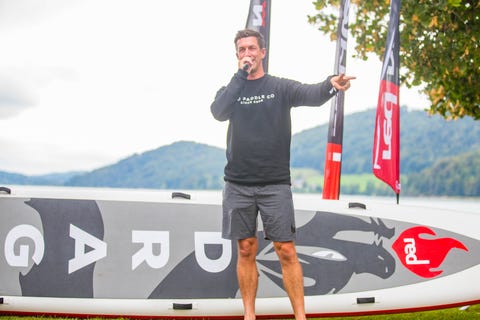
Hibbard distanced himself from windsurfing and started competing in SUP races, but he found that he missed the social aspect of that more casual time on the water. That desire to include his friends was what led him to consider how he might make the sport more accessible for everyone.
“I had pretty expensive carbon boards that I didn’t want to lend to my friends,” he said. “The glass fiber boards that were available were heavy, quite fragile, and expensive. All the friends I took [paddle boarding] loved it, but none of them bought their own. Red Paddle Co. came essentially from trying to find a way to facilitate my friends and I going paddling.”
After a decade of prototypes and design breakthroughs, the company now makes 25 different styles of boards and hosts an annual championship event for team races on its biggest product, the 22-foot Dragon, most recently in Lake Fuschl, Austria. [Full disclosure: I participated in this year’s event as a guest of Red Paddle Co.]
The Land SUP Workout
SUPs are useful for more than just racing or having fun out on the water. The full-body workout you get from paddling provides more variability than other routines you might try on land.
“You’ll never have two days the same,” Hibbard said. “The conditions can be different… doing things like interval training, adding trunk rotation to your strokes, paddling on just one side [can also add variability].”
If you’re land-locked without access to a SUP, you can still try this dumbbell workout to mimic the motions you’d make on the water. The rowing techniques allow you to push your core, legs, and upper body to the limit, making it a true full-body workout—just like if you were on a board.
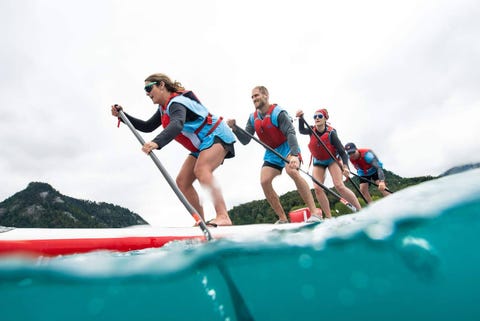
Courtesy of Global Shots
Perform each exercise for 30 seconds, for as many reps as possible. Rest for 30 seconds, then start the next move. After finishing the circuit, rest for 1 minute, then repeat twice more for 3 total rounds.
DB Downward Chop
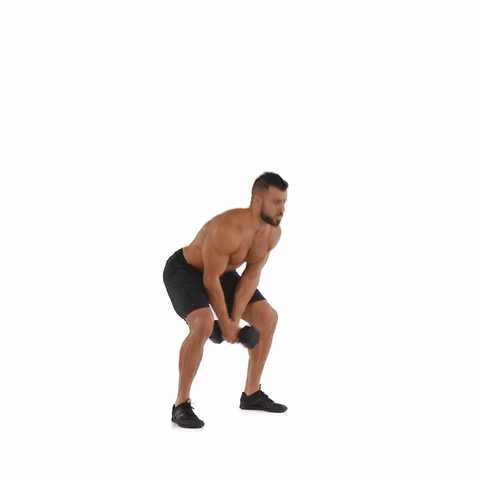

Men’s Health
- Hold a dumbbell with both hands.
- Squeeze your core and glutes to lift it over your head, keeping your elbows bent and pausing for a beat.
- Hinge at the hips and sit back, bending your knees slightly to swing the weight down through your legs. Keep your elbows slightly bent and your torso up, with your gaze ahead.
Three-Way Dumbbell Swing
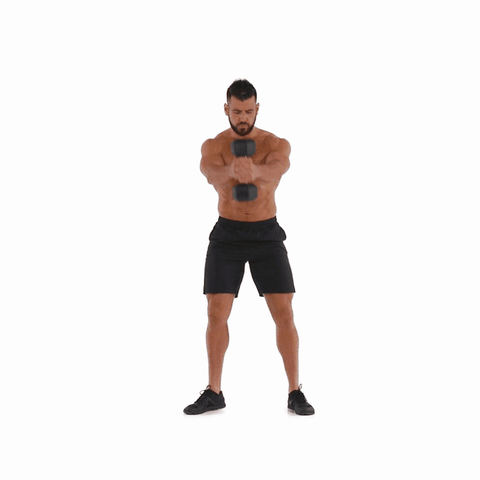

Men’s Health
- Hold a dumbbell with both hands.
- Raise the weight up to eye-level with your arms straight, squeezing your core.
- Twist your torso and pivot on your right foot to swing the weight down to your left side.
- Return to the starting position, then hinge at the hips and sit back slightly to swing down to the front, between your legs.
- Twist your torso and pivot on your left foot to swing the weight down to your right side.
Dumbbell Skier Swing
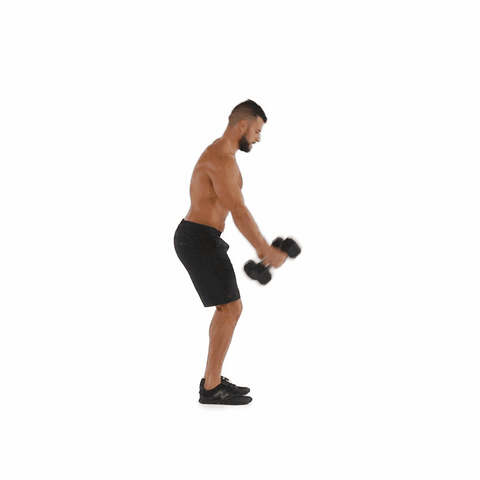

Men’s Health
- Hold a dumbbell in each hand, keeping the weights at your sides.
- Hinge at the hips and bend your knees slightly to sit back, swinging the weights behind you.
- Thrust your hips up to straighten up, using your momentum to swing the weights up to chest-level.
Pushup and Row
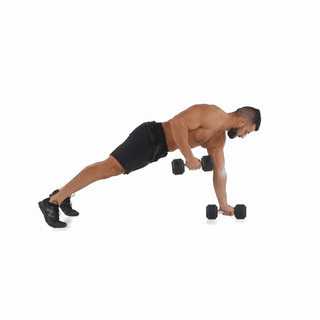

Men’s Health
Russian Twist


Source: Read Full Article
